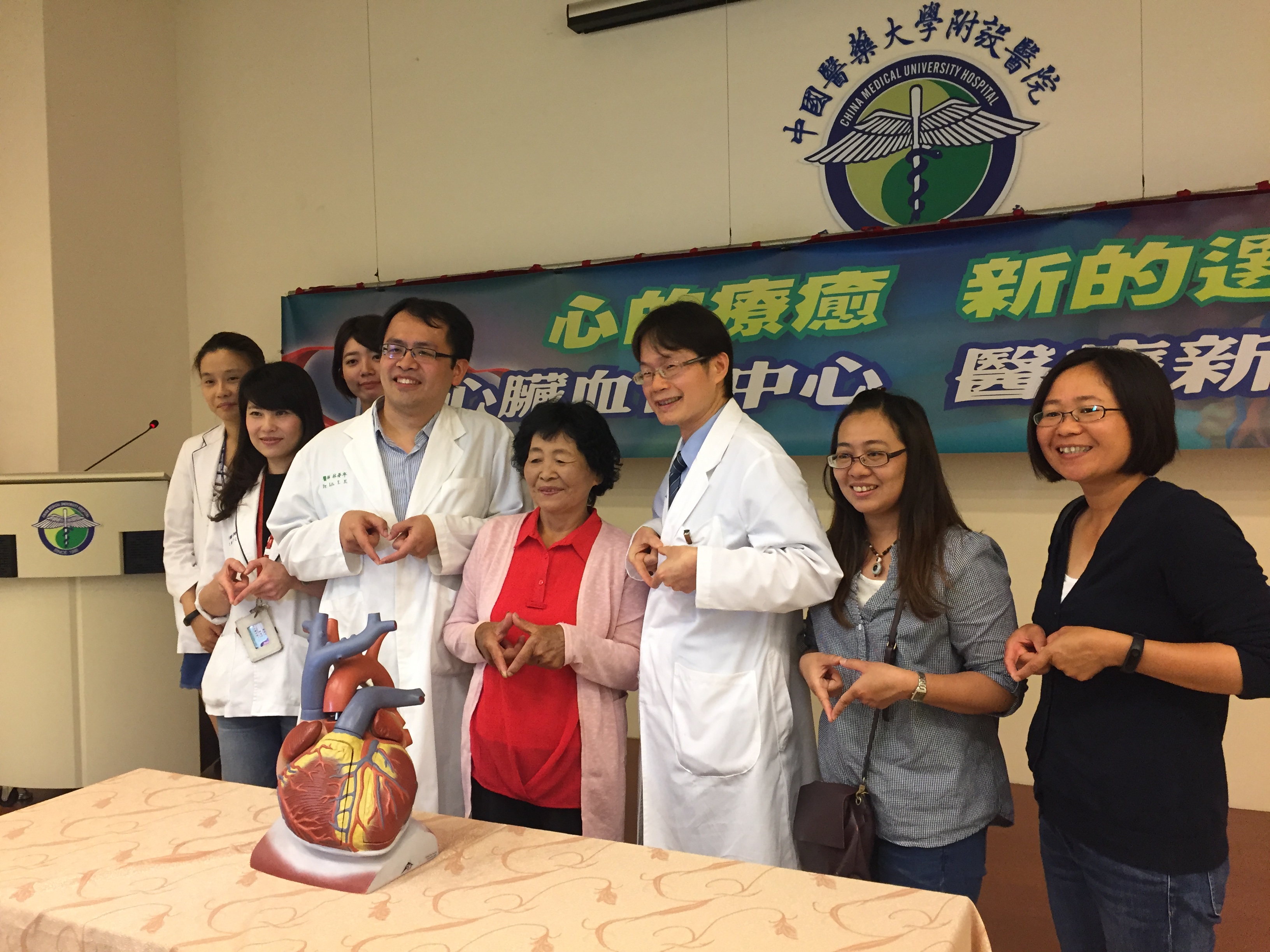News and Award
About CMUH
A woman received more than 20 electric shocks for heart arrhythmia. 3D Electrocoagulation treats the formidable atrial fibrillation

Atrial fibrillation is the most common cause of heart arrhythmia in adults, which current prevalence rate has surpassed 1% of total population in Taiwan (estimated at about 230,000 people). The symptoms are quite diverse, ranging from no symptoms to palpitations, chest tightness, dizziness, exhaustion, difficulty with breathing, and all possibilities. 58-year-old Ms. Luo from Nantou County suffered from heart failure and has taken medication to control the condition over the long run. However she experienced repeated chest tightness, palpitations, and exhaustion during Chinese New Year vacation. In a few minutes after each onset, Mrs. Luo would have intense difficulty in breathing and was sent for emergency rescue. Every time the X-ray displayed acute pulmonary edema while electrocardiogram showed the onset of atrial fibrillation. Mrs. Luo restored normal sinus rhythm after applying electric-shock current to the heart and taking diuretic as well as medication for heart failure for treatment before alleviating the symptoms.
3D Response Surface Plot Electrocoagulation removes the formidable atrial fibrillation
CMUH Cardiovascular Medicine Director Kuan-Cheng Chang stated that Mrs. Luo has onsets too frequently and received more than 20 electric shocks during the Chinese New Year vacation. Finally the heat failure of Mrs. Luo was stabilized through 3D response surface plot electrocoagulation therapy for atrial fibrillation; Mrs. Luo was then able to maintain the optimal function of the heart and eventually received the heart transplant surgery with success. Atrial fibrillation will increase five times the probability of stroke in patients and deteriorates heart function, causing permanent disability of patients, and heavy burden on the family, society and economy. Atrial fibrillation 3D electrocoagulation is a complex electrocoagulation therapy which could be worked with the electric signal within the heart based on X-ray fluoroscopy induction for electrocoagulation in the past. As technology advances in recent years, there are many 3D response surface plot techniques in the industry. 3D electrocoagulation technology allows physicians to understand thoroughly the pathogenesis of heart arrhythmia through spatial integration and the 3D imaging of electric signals in the heart. Physicians also develop applicable electrocoagulation strategies to operate the electrocoagulation on each fixed plot with precision and successfully remove the formidable atrial fibrillation.
Improve heart arrhythmia successfully and get rid of “electric shock” lifestyle
Kuan-Cheng Chang indicated that to inhibit atrial fibrillation, patients will first need to improve the lifestyle and sleep quality, avoid second-hand smoke and irritating food and drinks. Patients can control the condition by taking medication for heart arrhythmia in therapy. However patients with poor medication effect or patients inadaptable to the adverse effects of medicines can choose 3D electrocoagulation therapy for atrial fibrillation. Existing research shows that 3D electrocoagulation compared with conventional medicinal treatment has better effect in stabilized heart rhythm while the improvement of symptoms is also more remarkable, which can be taken into consideration for first-line treatment. Mrs. Luo attempted medication treatment with limited effect and has successfully blocked and removed the origin of atrial fibrillation on the left and right pulmonary veins under the team treatment led by CMUH Cardiovascular Medicine Director Kuan-Cheng Chang. The team has removed the heart arrhythmia that has long bothered Mrs. Luo while Mrs. Luo has now received a heart transport and is regularly followed-up in outpatient. She said: “I no longer have to receive electric shock.” Her heart rate is considerably stable with great recovery of activity and she is very happy now.
CMUH Cardiovascular Medicine Director Kuan-Cheng Chang



